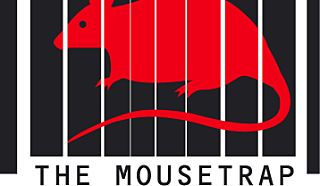The Mousetrap
[ An international conference on dealing with institutions in contemporary curatorial practice ]
Dedicated to the memory of Rube GoldbergParticipants: Barnabas Bencsik, Nicolas Bourriaud, Sebastian Cichocki, Hedwig Fijen, Maria Hussakowska, Maria Lind, Dorota Monkiewicz, Sune Nordgren, Nicolas Schafhausen, Barbara Steiner, Jaroslaw Suchan, Andrzej Szczerski, Thomas Wulffen
“Institution” became a keyword in the debates on art and art theory. At the same time, artists started to confront the institution critically. In their eye, “institution” was perceived as the embodiment of art-world power but also as a world-on-its-own, waiting to be deconstructed. In contrast to anti-institutional movements in the 1960s, the contemporary reflection was pronounced in new post-conceptual language. Besides, artists no longer wanted to abandon the institutions, but rather reflect on how to enter into a dialogue with them. The principal task was to negotiate and not to avoid.
The term “Mousetrap” in this context is being used in conjunction with Rube Goldberg’s machine project, which influenced the imagination of many, starting from artists and ending with computer game creators. The very idea of big and funny machinery that accomplishes little appears to be a good metaphor for the ambivalence with which the art institution is being seen today.
The entrapment of the artists or the curator, and sometimes even the artwork, in the context of a complicated and structured institutional engine is more than a shared conviction. It is a commonplace. But there is a treat inside the trap that makes it also alluring and attractive.
The questions we are asking through the conference concern the position of the curator working within the institutional structure and outside it. How can one overcome the obstacles of institutionalisation? Are there any subversive strategies that allow the independent curator to collaborate with such a structure? What about an independent becoming a part or even the head of an institution? How can the artists circumnavigate the boundaries of an institutional framework? And what about new concepts and examples of institutions, anti-institutions or quasi-institutions?
There is a good portion of new and innovative projects or older institutions getting a refreshed image in the reaction to the collapsing institutional décor. Regardless of that, the availability of funding for spectacular institutional projects puts art professionals into the game between fulfilling public expectations and realizing individualistic ideas. Focusing on this cultural phenomenon, “The Mousetrap” brings together curators working within and outside these structures, as well as art theorists and historians. Many of them share their expertise between the fields of theory and practice. The intention of the conference is to give an insight into today’s reflections and practices in encounters with institutions.
Located intentionally at Wyspa Institute of Art in Gdansk – an experimental and quasi-institutional environment for contemporary visual culture – the conference appears in Poland in the context of an ongoing local debate about the contemporary art museum in Warsaw and the regional collections of contemporary art, which are to be the nuclei of future local museums. Within the plethora of conferences, this particular one is intended to be the theoretical and practical point of reference for the debate, bringing a more international voice, and to undermine the conventional ideas and strategies in this field.
Logo © Twożywo


